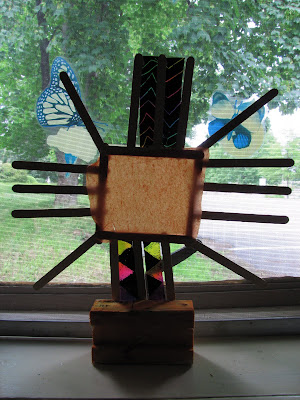This is an example of a kinetic sculpture harnessing the power of wind by artist David Riemer.
During the kinetic workshop, student created sculptures that MOVE using balance, wind and gravity, while learning about different artists that make kinetic sculpture.
Dolphin by Evelyn Howell


Penguin and 'Rubber' Duckie by Tim Sanford
In "Animal Homage" students used clay, plaster and rigid wrap (the same material used to make casts for broken bones) to mold, shape and sculpt different animals. Using watercolor paints and photographs for inspiration, they painted habitats for their animals (real or imaginary)...paying careful attention to food selection and biodiversity.

Sea shore by Tim Sanford


forest habitat...notice the relief animal addition
The Friday sculpture class played with light and shadow by creating sculptures that, when illuminated, cast unique patterns.

In the light: simple car construction...

in silhouette...









Students accomplished another fantastic reflection project...which I will share on another blog post. For now, have a great holiday weekend...and hopefully our students will look at sculpture differently; taking time to notice shape, form, pattern, texture, function, symmetry/asymmetry, and balance.









